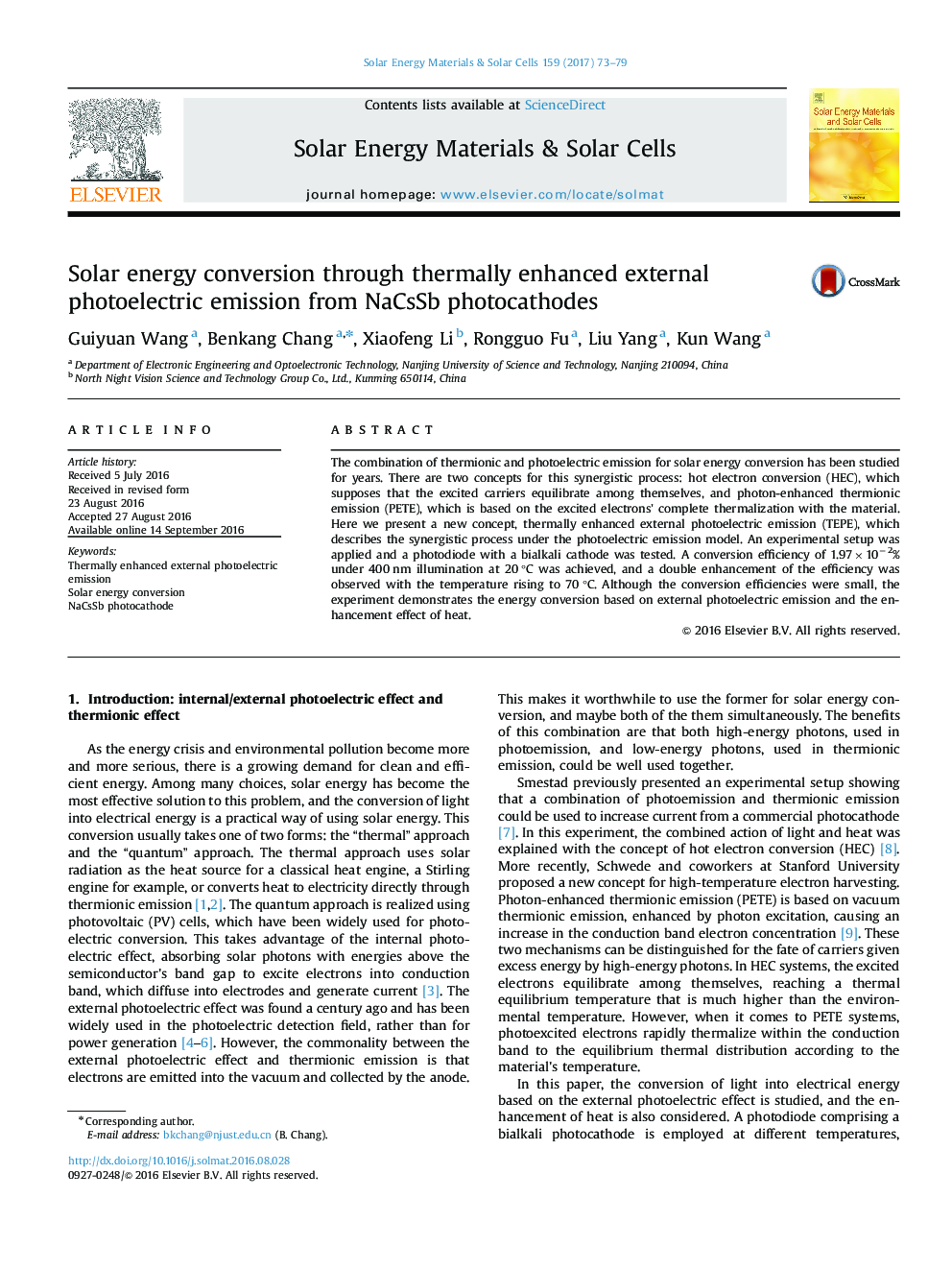| Article ID | Journal | Published Year | Pages | File Type |
|---|---|---|---|---|
| 6457450 | Solar Energy Materials and Solar Cells | 2017 | 7 Pages |
•The combination of thermionic and photoelectric emission for solar energy conversion was studied, including HEC and PETE.•An experimental set-up with a NaCsSb photodiode was applied for the conversion of light to electric energy.•A conversion efficiency of 1.97×10-2% at 20℃ was gained and a double enhancement observed with the temperature rising to 70℃.•A new concept , thermally enhanced external photoelectric emission (TEPE), was presented for solar energy conversion.•Essential differences among these three mechanisms (HEC, PETE, TEPE) were discussed.
The combination of thermionic and photoelectric emission for solar energy conversion has been studied for years. There are two concepts for this synergistic process: hot electron conversion (HEC), which supposes that the excited carriers equilibrate among themselves, and photon-enhanced thermionic emission (PETE), which is based on the excited electrons' complete thermalization with the material. Here we present a new concept, thermally enhanced external photoelectric emission (TEPE), which describes the synergistic process under the photoelectric emission model. An experimental setup was applied and a photodiode with a bialkali cathode was tested. A conversion efficiency of 1.97×10−2% under 400 nm illumination at 20 °C was achieved, and a double enhancement of the efficiency was observed with the temperature rising to 70 °C. Although the conversion efficiencies were small, the experiment demonstrates the energy conversion based on external photoelectric emission and the enhancement effect of heat.
